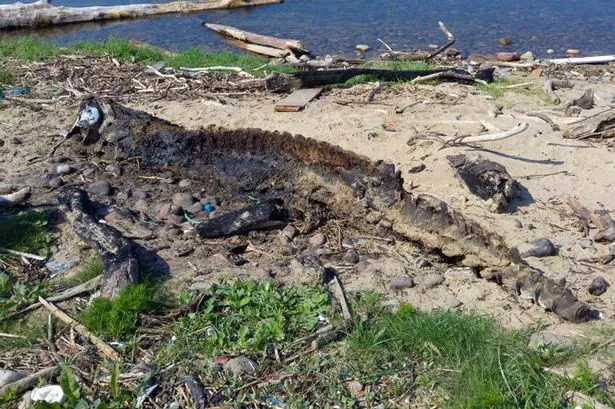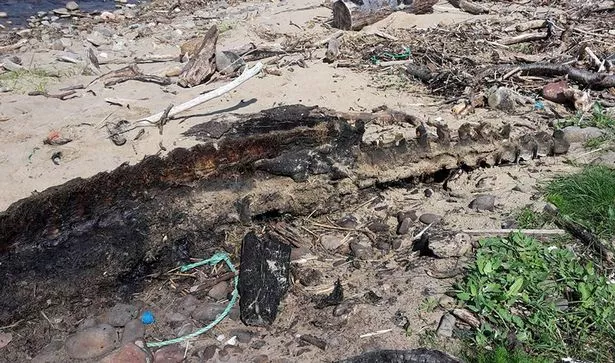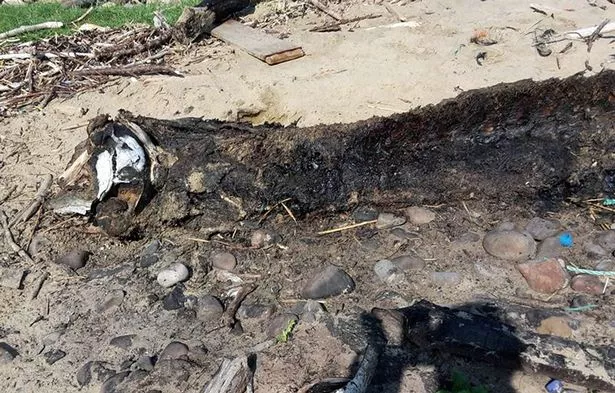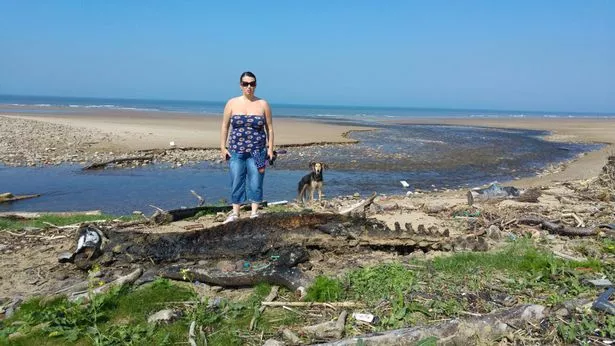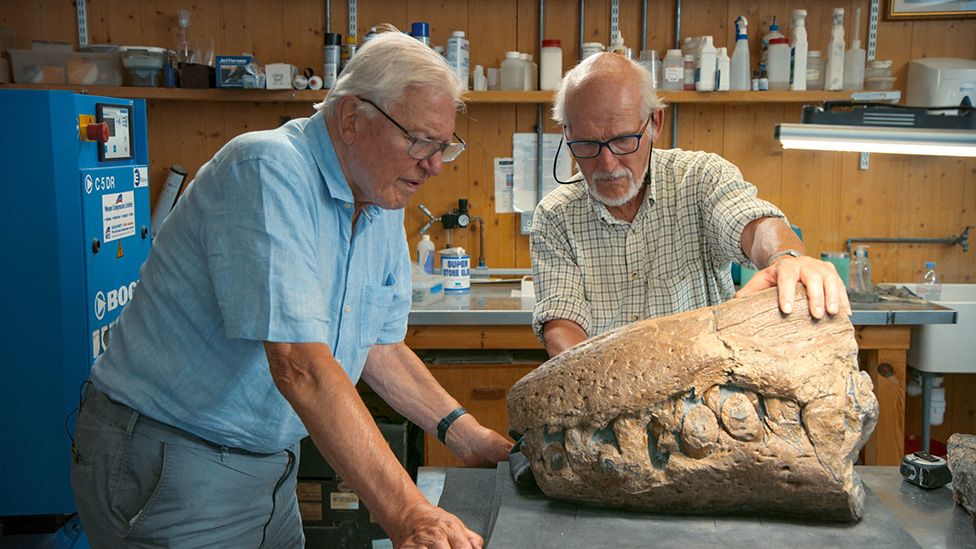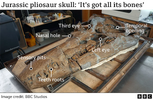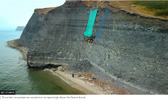http://www.philly.com/mld/inquirer/news/local/states/new_jersey/15369361.htm?source=rss&channel=inquirer_new_jersey
Biologists aren't sure why so many mammals have beached on the Atlantic shoreline in places opposite where they should be found.
By Jacqueline L. Urgo
Inquirer Staff Writer
BRIGANTINE, N.J. - Call it a version of the Peaceable Kingdom gone awry.
Biologists say it is a mystery as to exactly why dozens of marine mammals, some sick and starving, have beached along the mid-Atlantic shoreline this summer in areas opposite where they would normally be found.
Among the latest finds are five hooded seals, all pups about 6 months old that were brought to the Marine Mammal Stranding Center in Brigantine over the course of the last three weeks. Three were found on New Jersey beaches, one in North Carolina, and one in Virginia.
One emaciated seal was found eating sand. Another, with its protective slick fur almost completely molted, was found parched after its sensitive skin was exposed to the harmful rays of the sun. Yet another, the only female brought in, has been isolated from the others because it may be suffering from a parasitic infection.
The Marine Mammal Stranding Center rarely sees hooded seals, since they are primarily an arctic species, and the center has never rescued any during the summer months, founding director Bob Schoelkopf said.
All summer long, northern bottlenose whales, their usual range in the deep waters of the North Atlantic, have been beaching up and down the East Coast, Schoelkopf said.
Strangest of all may be a manatee, a species usually found in the warm tropical waters off Florida, that was first spotted two weeks ago in the Hudson River in New York. The large creature is apparently now cruising the New England states, having last been seen swimming off Falmouth, Mass., and North Kingstown, R.I.
Cathy A. Beck, a wildlife biologist with the U.S. Geological Survey in Gainesville, Fla., said it was the northernmost sighting of a manatee ever documented.
Wayward manatee aside, Schoelkopf said his center's main focus now is saving the five baby seals and trying to figure out an ecosystem turned upside down.
"We've never had this rate of strandings in the summer months, and we really have no definitive idea why it's happening," Schoelkopf said. "And why these animals are turning up in all these strange places. It's truly a mystery."
But there are theories.
Whales, dolphins, and other species use sound signals to mate, hunt and communicate with one another.
Some research, conducted by scientists at Woods Hole Oceanographic Institution in Massachusetts and Scripps Institution of Oceanography at the University of California San Diego, suggests that underwater noise levels generated by the military and from an expanding global shipping trade could be adversely affecting marine life.
Some scientists contend that long-range sonar testing conducted by the Navy off the East Coast may be creating too noisy of an underwater environment, one with unknown effects on marine life, according to Michelle Duval, a senior scientist with Environmental Defense, a nonprofit Washington-based environmental advocacy group.
At a recent hearing sponsored by the North Carolina Coastal Federation, Duval testified against establishing a 500-square-mile sonar range in the Atlantic Ocean 47 miles off Camp Lejeune on the North Carolina coast.
"We're very concerned about this because we think the research is clear that sonar testing can have an adverse impact on the marine environment," Duval said. "As it stands now, the Navy is required to give no warning when these tests are conducted and is not required to take into consideration migration patterns of any species when it conducts these tests."
Navy officials say the studies do not prove that sonar has any long-term effects in marine mammals.
In the meantime, the increase in summertime emergencies has strained conditions at the Brigantine center, one of only a half-dozen such facilities on the East Coast licensed by the federal government to aid stranded marine mammals.
The five seals each day ingest 50 pounds of capelin, a type of smelt found only in northern seas. The center can buy the fish only once a year, in July, and has already used much of the supply it purchased last month and froze to get it through the winter months, a usually busy harbor-seal rescue time.
Schoelkopf estimates that the care will ultimately cost the Marine Mammal Stranding Center about $1,500 per seal.
If they make it, the five seals will be transported by Schoelkopf to Maine, where they will be released into the North Atlantic.
After a milestone was reached this summer of more than 3,000 rescues since the center opened in 1977, and a recovery rate at around 80 percent, Schoelkopf is optimistic about the prognosis of the five seals.
Contact staff writer Jacqueline L. Urgo at 609-823-9629 or jurgo@phillynews.com.
Biologists aren't sure why so many mammals have beached on the Atlantic shoreline in places opposite where they should be found.
By Jacqueline L. Urgo
Inquirer Staff Writer
BRIGANTINE, N.J. - Call it a version of the Peaceable Kingdom gone awry.
Biologists say it is a mystery as to exactly why dozens of marine mammals, some sick and starving, have beached along the mid-Atlantic shoreline this summer in areas opposite where they would normally be found.
Among the latest finds are five hooded seals, all pups about 6 months old that were brought to the Marine Mammal Stranding Center in Brigantine over the course of the last three weeks. Three were found on New Jersey beaches, one in North Carolina, and one in Virginia.
One emaciated seal was found eating sand. Another, with its protective slick fur almost completely molted, was found parched after its sensitive skin was exposed to the harmful rays of the sun. Yet another, the only female brought in, has been isolated from the others because it may be suffering from a parasitic infection.
The Marine Mammal Stranding Center rarely sees hooded seals, since they are primarily an arctic species, and the center has never rescued any during the summer months, founding director Bob Schoelkopf said.
All summer long, northern bottlenose whales, their usual range in the deep waters of the North Atlantic, have been beaching up and down the East Coast, Schoelkopf said.
Strangest of all may be a manatee, a species usually found in the warm tropical waters off Florida, that was first spotted two weeks ago in the Hudson River in New York. The large creature is apparently now cruising the New England states, having last been seen swimming off Falmouth, Mass., and North Kingstown, R.I.
Cathy A. Beck, a wildlife biologist with the U.S. Geological Survey in Gainesville, Fla., said it was the northernmost sighting of a manatee ever documented.
Wayward manatee aside, Schoelkopf said his center's main focus now is saving the five baby seals and trying to figure out an ecosystem turned upside down.
"We've never had this rate of strandings in the summer months, and we really have no definitive idea why it's happening," Schoelkopf said. "And why these animals are turning up in all these strange places. It's truly a mystery."
But there are theories.
Whales, dolphins, and other species use sound signals to mate, hunt and communicate with one another.
Some research, conducted by scientists at Woods Hole Oceanographic Institution in Massachusetts and Scripps Institution of Oceanography at the University of California San Diego, suggests that underwater noise levels generated by the military and from an expanding global shipping trade could be adversely affecting marine life.
Some scientists contend that long-range sonar testing conducted by the Navy off the East Coast may be creating too noisy of an underwater environment, one with unknown effects on marine life, according to Michelle Duval, a senior scientist with Environmental Defense, a nonprofit Washington-based environmental advocacy group.
At a recent hearing sponsored by the North Carolina Coastal Federation, Duval testified against establishing a 500-square-mile sonar range in the Atlantic Ocean 47 miles off Camp Lejeune on the North Carolina coast.
"We're very concerned about this because we think the research is clear that sonar testing can have an adverse impact on the marine environment," Duval said. "As it stands now, the Navy is required to give no warning when these tests are conducted and is not required to take into consideration migration patterns of any species when it conducts these tests."
Navy officials say the studies do not prove that sonar has any long-term effects in marine mammals.
In the meantime, the increase in summertime emergencies has strained conditions at the Brigantine center, one of only a half-dozen such facilities on the East Coast licensed by the federal government to aid stranded marine mammals.
The five seals each day ingest 50 pounds of capelin, a type of smelt found only in northern seas. The center can buy the fish only once a year, in July, and has already used much of the supply it purchased last month and froze to get it through the winter months, a usually busy harbor-seal rescue time.
Schoelkopf estimates that the care will ultimately cost the Marine Mammal Stranding Center about $1,500 per seal.
If they make it, the five seals will be transported by Schoelkopf to Maine, where they will be released into the North Atlantic.
After a milestone was reached this summer of more than 3,000 rescues since the center opened in 1977, and a recovery rate at around 80 percent, Schoelkopf is optimistic about the prognosis of the five seals.
Contact staff writer Jacqueline L. Urgo at 609-823-9629 or jurgo@phillynews.com.

